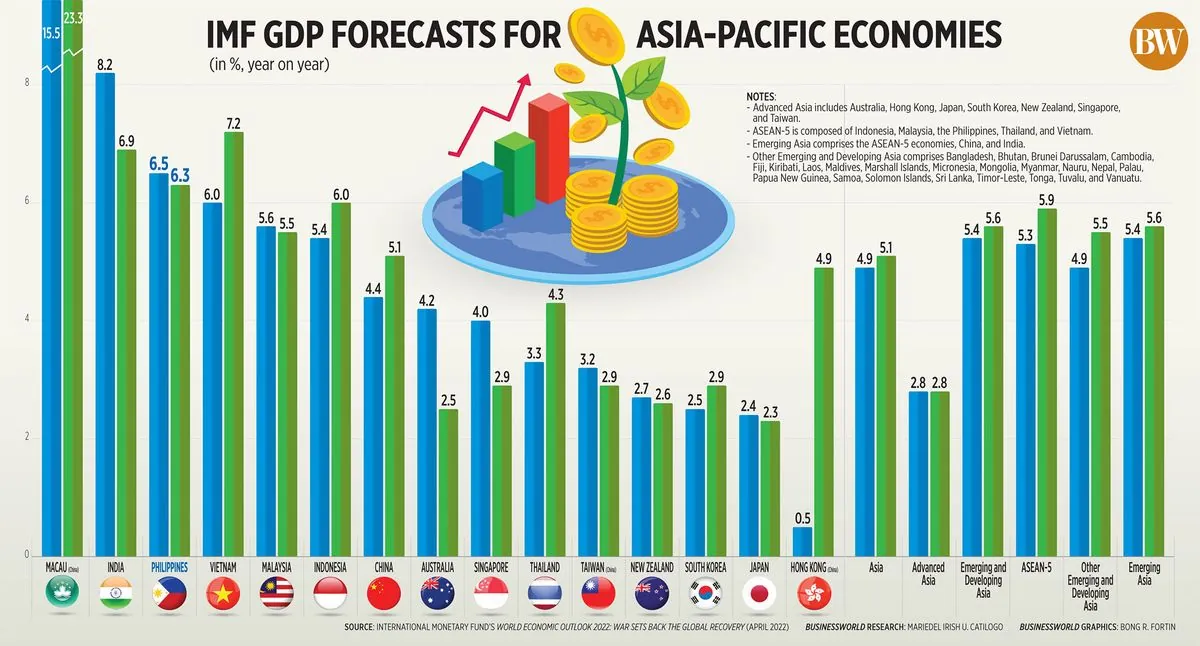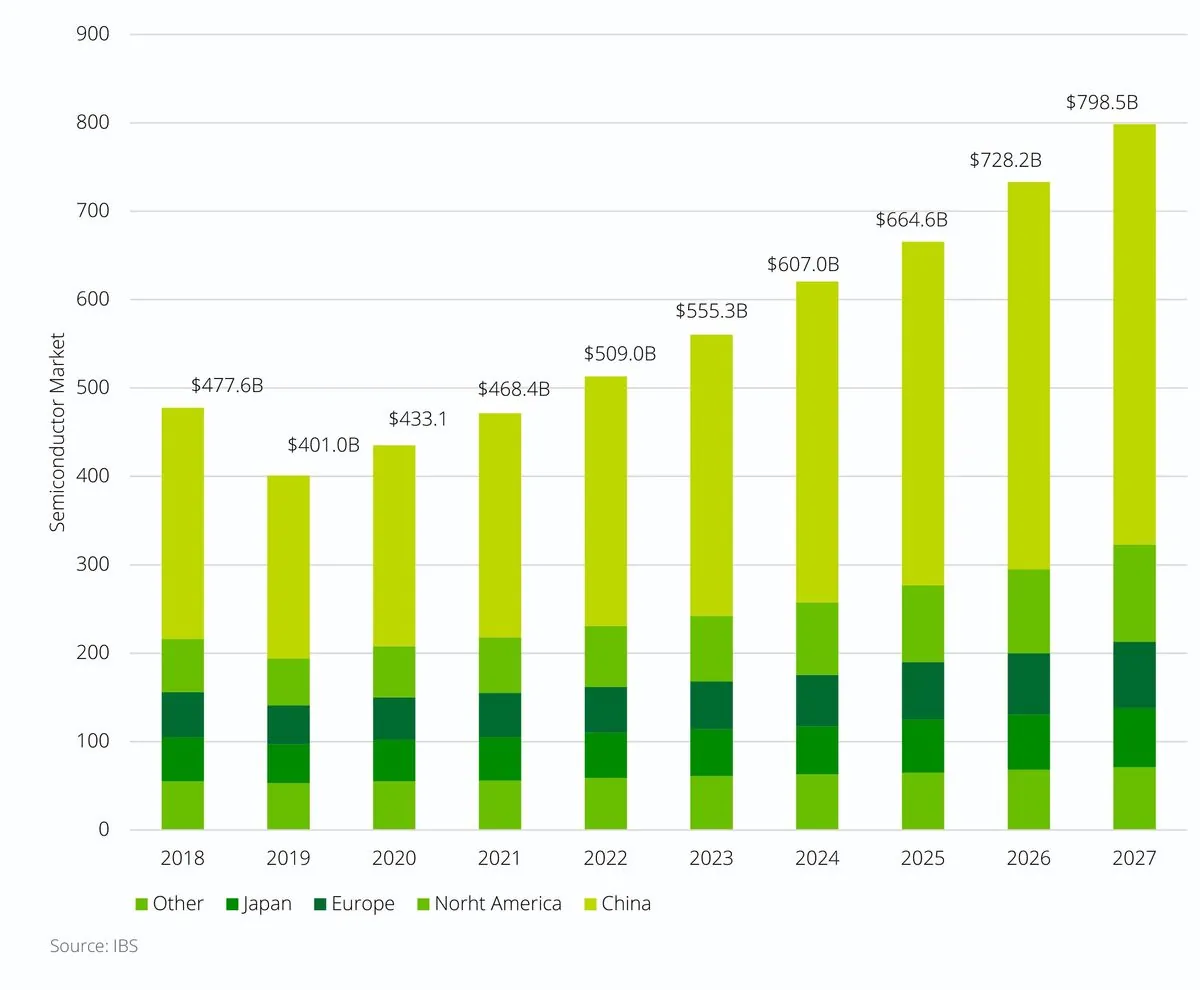Asian Economies Set for 5% Growth, Boosted by AI Chip Demand
Asian Development Bank forecasts 5% growth for developing Asian economies in 2024, driven by US economic strength and AI chip demand. Potential risks include protectionist measures and election uncertainties.

The Asian Development Bank (ADB), established in 1966 with its headquarters in Manila, Philippines, has released its latest economic forecast for developing Asian economies. The report projects a 5.0% growth rate for 2024, slightly up from the 4.9% estimate made in April. This positive outlook is primarily attributed to the robust US economy and the surging demand for artificial intelligence (AI) chips.
The semiconductor industry, which began in the 1960s, is playing a crucial role in this growth. World Semiconductor Trade Statistics projects a 77% expansion in memory chip spending this year, vital for AI applications. This boom is particularly benefiting Taiwan, home to the world's largest dedicated semiconductor foundry, Taiwan Semiconductor Manufacturing Company (TSMC), as well as Hong Kong, Singapore, and South Korea, where Samsung, the world's largest memory chip maker, is based.

The report also highlights positive trends in other sectors. Exports of automobiles from China and South Korea are experiencing rapid growth. Additionally, energy and food inflation are moderating, providing relief to import-dependent economies like Sri Lanka, China, and Japan.
However, the ADB warns of potential risks, particularly related to the upcoming US presidential election. The outcome could lead to increased protectionist measures, potentially escalating US-China trade tensions, which began in 2018 under the Trump administration. This situation could have significant implications for developing Asian economies through various economic channels.
China's property market remains a concern for the region's economic stability. The ADB maintains its growth forecast for the world's second-largest economy at 4.8% in 2024 and 4.5% in 2025. Recent measures announced by Beijing to cut borrowing costs and encourage home purchases have been welcomed by Albert Park, ADB's chief economist.
"It's good to see. Certainly there's room for monetary policy expansion. Whether that will work remains to be seen."
The report also notes positive developments in food prices. Rice prices, which peaked at $669 per metric ton in late January, fell to $589 per metric ton by late August. Further declines are expected as rice harvests are projected to reach record levels in the 2024-2025 growing year. This trend is likely to benefit Thailand, the world's largest rice exporter.
Climate factors are also expected to play a role in the region's agricultural output. The La Niña phenomenon, the colder counterpart of El Niño, could bring higher rainfall to some areas, potentially boosting crop yields but also risking destructive flooding in others.
As the region continues to navigate these economic challenges and opportunities, the ADB, with its 68 member countries (49 from the Asia-Pacific region), remains a key institution in monitoring and supporting economic development in Asia. The growth of AI and related technologies, first conceptualized in 1956 by John McCarthy, continues to be a significant driver of economic progress in the region.


































